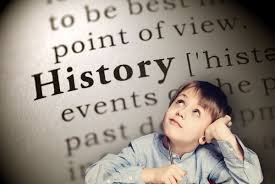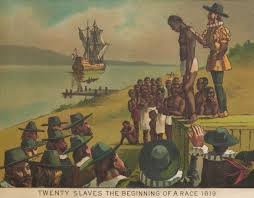White history month is a time to learn about the history, culture, and contributions of white people throughout history. White history month helps people explore stories, achievements, and experiences that shaped communities and societies. While history often highlights many events, white history month encourages everyone to reflect on the role of white individuals and families in building nations, arts, and sciences. It is not about excluding others but about adding knowledge to history in a balanced way. This month gives teachers, students, and families a chance to celebrate traditions, innovations, and milestones that have influenced the world. From scientific discoveries to cultural contributions, white history month reminds us that every group has unique stories worth understanding. It is also a way to connect history with today’s world, helping people appreciate different perspectives while learning lessons from the past.
During white history month, many activities take place in schools, communities, and online platforms. People organize events, write articles, share videos, and create projects about influential figures and historical moments related to white communities. White history month can also highlight local heroes, artists, and inventors whose work shaped society in ways we still feel today. By learning about these contributions, children and adults can develop a broader view of history and understand how different cultures interacted over time. The month encourages discussion, research, and reflection about achievements, challenges, and lessons from history. It is also a reminder that history belongs to everyone, and understanding each part of it helps create a more complete picture of our shared world. White history month gives us an opportunity to celebrate learning, promote awareness, and inspire future generations to explore history with curiosity and respect.
White History Month: Understanding Its Meaning and Importance

White history month is a time to learn about the history, culture, and contributions of white people throughout history. White history month helps people explore stories, achievements, and experiences that shaped communities and societies. While history often highlights many events, white history month encourages everyone to reflect on the role of white individuals and families in building nations, arts, and sciences. It is not about excluding others but about adding knowledge to history in a balanced way. This month gives teachers, students, and families a chance to celebrate traditions, innovations, and milestones that have influenced the world. From scientific discoveries to cultural contributions, white history month reminds us that every group has unique stories worth understanding. It is also a way to connect history with today’s world, helping people appreciate different perspectives while learning lessons from the past.
During white history month, many activities take place in schools, communities, and online platforms. People organize events, write articles, share videos, and create projects about influential figures and historical moments related to white communities. White history month can also highlight local heroes, artists, and inventors whose work shaped society in ways we still feel today. By learning about these contributions, children and adults can develop a broader view of history and understand how different cultures interacted over time. The month encourages discussion, research, and reflection about achievements, challenges, and lessons from history. It is also a reminder that history belongs to everyone, and understanding each part of it helps create a more complete picture of our shared world. White history month gives us an opportunity to celebrate learning, promote awareness, and inspire future generations to explore history with curiosity and respect.
What Is White History Month?
White history month is a period set aside to study and reflect on the contributions of white communities in history. It focuses on achievements in science, literature, art, and community building. Learning about these contributions does not mean ignoring the history of other groups. Instead, it helps people see history as a full story, where every group has played a part. The goal is to educate people, encourage cultural understanding, and provide opportunities to celebrate important figures and events that might not always be highlighted in mainstream history lessons.
The Origins of White History Month
White history month is less known than other cultural history months, but it started as a way to create balance in historical education. While many history lessons focus on major events and minority contributions, there was a need to also teach about the specific achievements of white communities in different countries. Schools and educators began organizing special programs and activities to encourage learning about inventions, arts, and leadership that helped shape modern societies. Over time, the month has become a way to promote discussion, curiosity, and respect for all parts of history.
Key Figures Celebrated During White History Month
White history month often highlights people who made lasting contributions in various fields. For example, scientists like Isaac Newton and Marie Curie (who was of European descent) changed the way we understand the world. Writers and artists, such as William Shakespeare and Leonardo da Vinci, influenced literature and art for centuries. Leaders and innovators in education, medicine, and community development are also celebrated. These individuals’ stories help us understand the challenges they faced, the work they accomplished, and the lessons we can learn today.
White History Month in Schools: Activities and Learning Tips
Schools often play an important role in celebrating white history month. Activities can include creating posters, writing short essays, or presenting projects about famous figures or events. Teachers can organize storytelling sessions or history games to make learning fun and interactive. One great way for students to learn is by comparing historical events from different communities to understand how they influenced each other. White history month in schools helps children appreciate diversity and understand that history is made by all groups working together over time.
Contributions of White Communities in Arts and Science

White history month highlights achievements in arts, literature, music, and science. Famous writers, painters, and composers contributed works that influenced culture worldwide. In science, white individuals have led discoveries in physics, chemistry, and medicine that shaped modern life. Celebrating these achievements helps people understand how knowledge and creativity developed across generations. Learning about these contributions also shows the importance of hard work, curiosity, and collaboration in building a better world.
How White History Month Promotes Understanding and Respect
One of the main goals of white history month is to encourage understanding and respect. When people learn about the history of all communities, including white communities, they gain a more complete view of the past. This understanding reduces stereotypes and promotes empathy. White history month encourages discussions about how different groups influenced each other and worked together. It is a way to build awareness that everyone has a story, and every story matters in shaping our shared history.
Interesting Facts About White History Month
- White history month is celebrated in different ways in schools and communities worldwide.
- The month includes learning about local heroes and global figures.
- Celebrations may involve essays, art projects, storytelling, and online content.
- White history month is not about exclusion but about education and awareness.
- It helps students and adults understand history in a more complete way.
How to Celebrate White History Month at Home
Families can celebrate white history month at home by reading books about historical figures, watching educational videos, or visiting museums. Parents can encourage children to write about famous inventors, writers, or leaders and discuss their contributions. Cooking traditional recipes, learning folk music, or exploring art from different regions are also fun ways to engage with history. These activities make learning interactive and help children connect with stories from the past.

Conclusion
Learning about white history, like learning about any other group’s history, teaches valuable lessons. It shows how communities faced challenges, solved problems, and achieved progress. These lessons inspire us to think critically, appreciate creativity, and respect different cultures. White history month also emphasizes the importance of curiosity, research, and understanding multiple perspectives. By learning about history in this way, we can make better decisions today and create a more inclusive future.
FAQs
Q1: What is white history month?
A1: White history month is a time to learn about the history, culture, and achievements of white communities. It focuses on contributions in arts, science, literature, and leadership.
Q2: Why is white history month important?
A2: It helps people understand a part of history that is often overlooked and promotes learning, respect, and cultural awareness.
Q3: Who is celebrated during white history month?
A3: Scientists, artists, writers, inventors, and leaders from white communities are commonly celebrated.
Q4: How can schools celebrate white history month?
A4: Schools can organize projects, storytelling, essay competitions, history games, and interactive learning sessions about important figures and events.
Q5: Can families celebrate white history month at home?
A5: Yes. Families can read history books, watch educational videos, visit museums, explore art, music, and traditional recipes from white communities.





